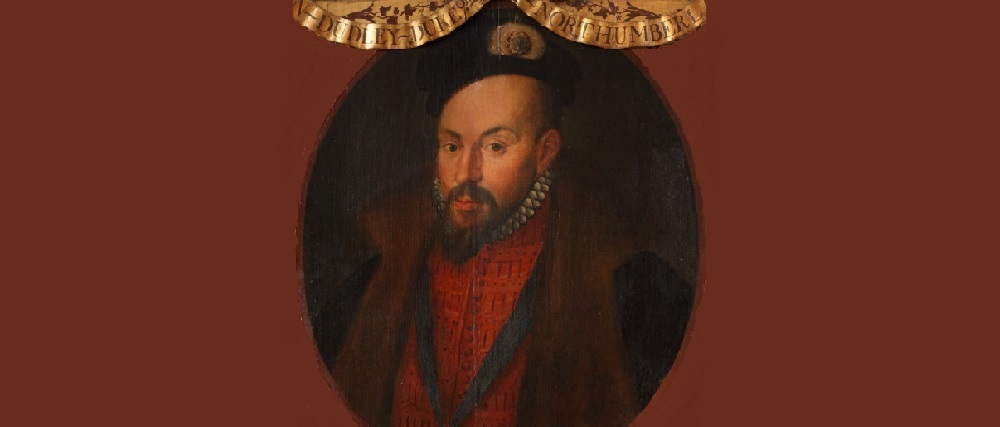John Dudley, 1st Duke of Northumberland
Posted on 2nd February 2021
John Dudley was born in 1504, the eldest of three sons to Edmund Dudley and his second wife Elizabeth Grey. Edmund Dudley had served Henry VII as councillor, but he was later executed for high treason in 1510.
At the age of seven, Dudley entered the household of Sir Edward Guildford as his ward. Little is known of his early life, but through the guardianship of Guildford he was to gain prominence in the service of Henry VIII. In 1521 and 1527, Dudley took part in Cardinal Wolsey’s diplomatic missions and in 1523 he was knighted by Charles Brandon, 1st Duke of Suffolk during the invasion of France.
In 1525 Dudley married Jane, the daughter of Edward Guildford, and this marriage produced at least ten children.
Edward Guildford died in 1534 and following his death, Dudley took the position of Master of the Tower Armoury. He was to acquire many more titles over the years, all increasing his prominence at court.
In 1542, Dudley became Viscount Lisle upon the death of his step-father Arthur Plantagenet, which promoted him to the House of Lords. In 1543, he became Lord Admiral and Knight of the Garter and was now admitted to the Privy Council. He also became a highly respected fleet commander, both against Scotland and France.
By now Dudley was highly regarded by Henry VIII, and became an intimate of his. When Henry VIII died in January 1547, he had stated in his will that Dudley take the title of Earl of Warwick, and become Lord Great Chamberlain.
As the new King Edward VI was too young to rule, a regency council was formed with Edward Seymour, Duke of Somerset becoming the leading figure as Lord Protector.
Somerset was unpopular with other council members and in 1549, Dudley led a coup to remove him from power, and by 1550 Dudley had become Lord President of the Council.
Although removed from power, Somerset attracted support and hoped to re-establish his position at court.
Dudley became 1st Duke of Northumberland on 11 October 1551 and five days later he had Somerset arrested and charged with treason. He was acquitted of treason, but convicted of felony he was executed on 22 January 1552.
Dudley was now effectively regent of England.
In February 1553 the young Edward VI became seriously ill; thought now had to be given to his successor. Edward was raised a protestant and he did not want his catholic sister Mary coming to the throne.
Around this time Dudley was arranging the marriage of his son Guildford to Lady Jane Grey, daughter of the Duke of Suffolk. This marriage was not thought to be of any significance, however these thoughts were misplaced. Lady Jane Grey was the grandniece of Henry VIII, through her mother Frances Brandon, and therefore had a claim to the throne; she was also a staunch protestant.
During his illness Edward VI was manipulated by Dudley. Both Mary and her sister Elizabeth had been deemed as illegitimate by their father Henry VIII, removing them from succession, and Dudley used this knowledge to his advantage.
Edwards will, stated that his successor should come from the male offspring of Lady Jane Grey, later changed to Lady Jane Grey and male offspring.
Edward VI died on 6 July 1553, and Lady Jane Grey was named Queen of England on 10 July 1553.
Dudley had made errors, believing that Mary would not oppose the throne. Although he had sent troops to secure her, he had been too late as she had moved herself to East Anglia, where she had much support.
While raising an army, Mary wrote a letter demanding to be recognised as Queen. This arrived on the same day that Lady Jane Grey was named Queen.
Dudley had also miscalculated the support that Mary held, and it didn’t take her long to assemble a substantial army.
Dudley led his own army against Mary, however he was to be deserted by many around him and chose to surrender on 20 July 1553.
John Dudley, 1st Duke of Northumberland was tried and convicted of treason on 18 August in Westminster Hall and was executed at Tower Hill on 22 August 1553.
He had spent his life promoting his own and his families position, but did not know when to stop and it cost him his life.
Mary Tudor was proclaimed Queen Mary I of England on 19 August and crowned on 1 October 1553.
Tagged as: Junior Tudors
Share this post:





